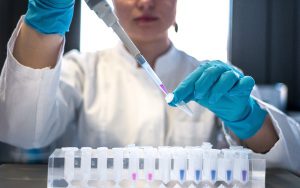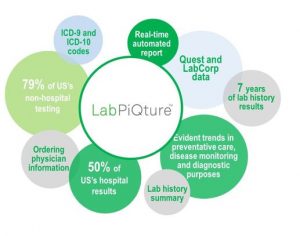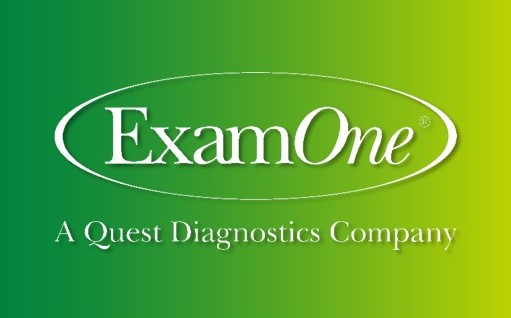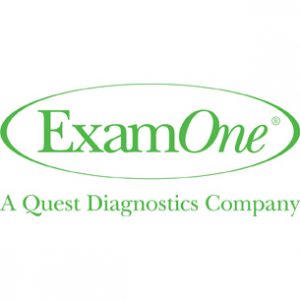Originally published July 21, 2022
Authored by: Doug Ingle, FALU, FLMI, Doug Ingle Underwriting Research LLC
American Para Professional Systems, Clinical Reference Labs, ExamOne, and IMS Paramed have joined forces to create a robust deidentified dataset of life insurance applicants spanning the years 2015-2022. This data allows for interesting insights to be gained and shared. For one example, there is a concerning industry trend shown in these numbers that needs to be put under a spotlight.
There are 18,375,304 life insurance applicants whose Lab Slip findings and cotinine testing occurred between June 1, 2015 and June 9, 2022. The Lab Slip, completed at time of fluid draw, contains questions which identify applicants who admit to using nicotine, or nicotine substitutes. This study focuses on those who deny use of nicotine in any form for at least a year or more prior to application, while producing urine specimens with cotinine (a nicotine byproduct) levels at which underwriters are satisfied these individuals are tobacco/nicotine users.
In 2022, 1 in 3 in the applicant population deny tobacco use
Most Americans don’t use tobacco products. Thus, one might expect the percent that misrepresent to be small and irrelevant. In 2015, just 2.0% of insurance buying applicants forgot to declare their nicotine use. But that number isn’t trivial, and has steadily increased each year. Now in 2022, 3.5% of the applicant population misrepresents their tobacco use. That’s a 75% increase. In 2015, one in five members (20%) of the tobacco class denied use but were caught by testing. As of 2022, that number has risen to one in three (32%).
Using the society of actuaries (SOA) 2015, Age Last Birthday (ALB), Valuation Basic Table (VBT), we can isolate the extra mortality for tobacco use. The SOA produces industry mortality tables that report non-tobacco and tobacco mortality rates for standard issued insured lives. These tables reflect the unique differences in mortality based on tobacco status alone. Although this increased mortality rate has been shown to persist over a lifetime, this article will only consider the increase in mortality associated with the first 10 years after policy issue. The Lab Slip reports the amount of life insurance applied for. If we assume an annualized lapse rate of 3% and a discount interest rate of 3%, we can convert the tobacco nondisclosure extra mortality into a present value figure.
The present value of future death benefits for the first 10 years post-issue is $4,086,029,825
The reason this study can be performed is because this misrepresentation is caught by companies that test for cotinine. Keep in mind, this data is derived from fully tested business where the applicant knows testing will occur. Even in this tested business, nondisclosure has been consistently on the rise year to year. Therefore, findings described here only represent the tested portion of the life insurance industry.
How much bigger might this problem be for individual life insurance products that forgo lab testing?


















Originally published July 21, 2022
Authored by: Doug Ingle, FALU, FLMI, Doug Ingle Underwriting Research LLC
American Para Professional Systems, Clinical Reference Labs, ExamOne, and IMS Paramed have joined forces to create a robust deidentified dataset of life insurance applicants spanning the years 2015-2022. This data allows for interesting insights to be gained and shared. For one example, there is a concerning industry trend shown in these numbers that needs to be put under a spotlight.
There are 18,375,304 life insurance applicants whose Lab Slip findings and cotinine testing occurred between June 1, 2015 and June 9, 2022. The Lab Slip, completed at time of fluid draw, contains questions which identify applicants who admit to using nicotine, or nicotine substitutes. This study focuses on those who deny use of nicotine in any form for at least a year or more prior to application, while producing urine specimens with cotinine (a nicotine byproduct) levels at which underwriters are satisfied these individuals are tobacco/nicotine users.
In 2022, 1 in 3 in the applicant population deny tobacco use
Most Americans don’t use tobacco products. Thus, one might expect the percent that misrepresent to be small and irrelevant. In 2015, just 2.0% of insurance buying applicants forgot to declare their nicotine use. But that number isn’t trivial, and has steadily increased each year. Now in 2022, 3.5% of the applicant population misrepresents their tobacco use. That’s a 75% increase. In 2015, one in five members (20%) of the tobacco class denied use but were caught by testing. As of 2022, that number has risen to one in three (32%).
Using the society of actuaries (SOA) 2015, Age Last Birthday (ALB), Valuation Basic Table (VBT), we can isolate the extra mortality for tobacco use. The SOA produces industry mortality tables that report non-tobacco and tobacco mortality rates for standard issued insured lives. These tables reflect the unique differences in mortality based on tobacco status alone. Although this increased mortality rate has been shown to persist over a lifetime, this article will only consider the increase in mortality associated with the first 10 years after policy issue. The Lab Slip reports the amount of life insurance applied for. If we assume an annualized lapse rate of 3% and a discount interest rate of 3%, we can convert the tobacco nondisclosure extra mortality into a present value figure.
The present value of future death benefits for the first 10 years post-issue is $4,086,029,825
The reason this study can be performed is because this misrepresentation is caught by companies that test for cotinine. Keep in mind, this data is derived from fully tested business where the applicant knows testing will occur. Even in this tested business, nondisclosure has been consistently on the rise year to year. Therefore, findings described here only represent the tested portion of the life insurance industry.
How much bigger might this problem be for individual life insurance products that forgo lab testing?
View our webinar onthis topic.